
Sassafras variifolium - Plant
(MRP Inclusive of all taxes)
- Shipping ₹79 for entire order
- Dispatch in 7 days
- Country of origin: India

(MRP Inclusive of all taxes)
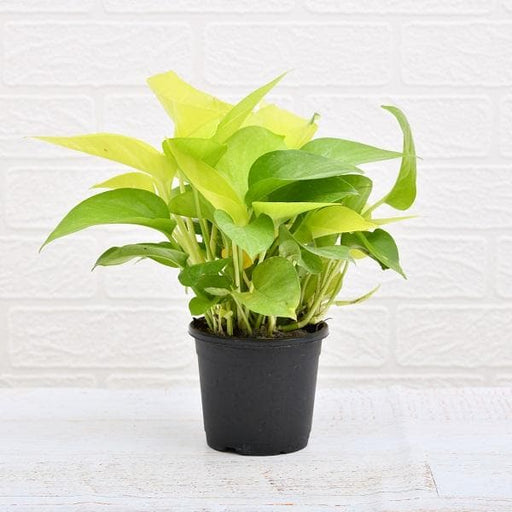 Save 29%
Save 29%
Air Purifier Money Plant with Pot The Air Purifier Money Plant, also known as Pothos or Epipremnum aureum, is a stunning indoor plant that...
View full details
 Save up to 15%
Save up to 15%
Peace Lily, Spathiphyllum - Plant The Peace Lily, scientifically known as Spathiphyllum, is a stunning houseplant celebrated for its elegant white...
View full details
 Save 25%
Save 25%
Jasminum sambac, Mogra, Arabian Jasmine - Plant Jasminum sambac, commonly known as Mogra or Arabian Jasmine, is a fragrant flowering plant...
View full details
 Save 18%
Save 18%
Combo Constituents Includes the Parijat Tree (Night-Flowering Jasmine), a culturally significant plant with fragrant flowers. Description The Pari...
View full details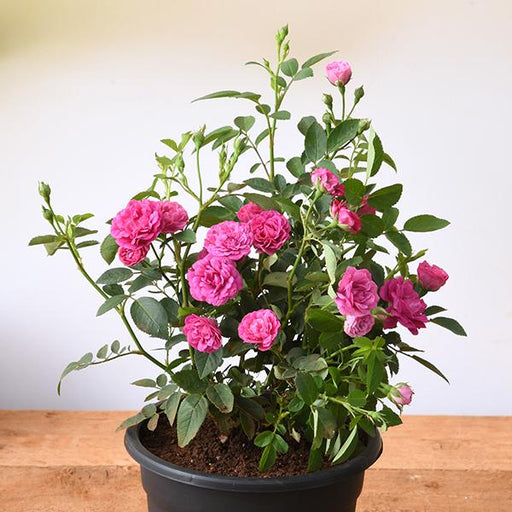
 Save 25%
Save 25%
Miniature Rose, Button Rose (Any Color) - Plant The Miniature Rose, also known as the Button Rose, is a charming and compact flowering plant that ...
View full details Save 25%
Save 25%
Damascus Rose, Scented Rose (Any Color) - Plant The Damascus Rose, also known as Rosa damascena, is a timeless symbol of beauty and romanc...
View full details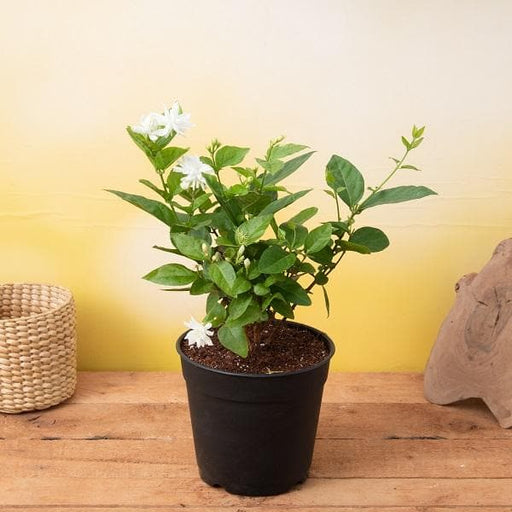
 Save 17%
Save 17%
Beautiful Fragrant Mogra, Arabian Jasmine Plant with Pot The Beautiful Fragrant Mogra, also known as Arabian Jasmine (Jasminum sambac), is...
View full details Save 15%
Save 15%
Pack of Vermicompost and Neem Cake for House Plants Transform your indoor garden with our premium Pack of Vermicompost and Neem Cake, spec...
View full details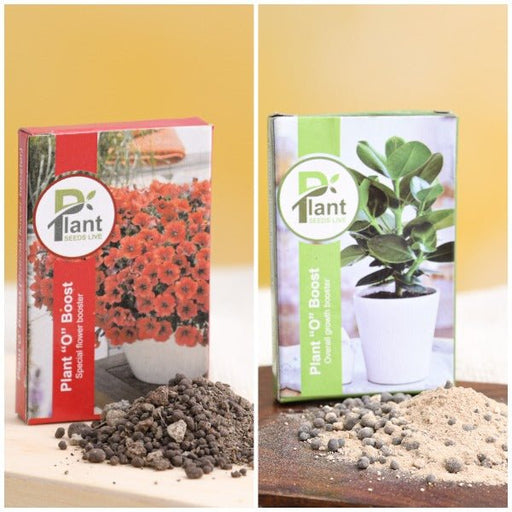
Pack of Plant Growth and Flower Boosters Unlock the full potential of your garden with our Pack of Plant Growth and Flower Boosters! This ...
View full details Save 38%
Save 38%
Combo of Jeevamrut and Neem Raksha for Easy Growth and Protection of Houseplants Transform your indoor garden with our exclusive combo of ...
View full details Save 22%
Save 22%
Plant Nutrients Kit (Pack of 16) for a Healthy Garden Transform your garden into a lush paradise with our Plant Nutrients Kit, featuring 1...
View full details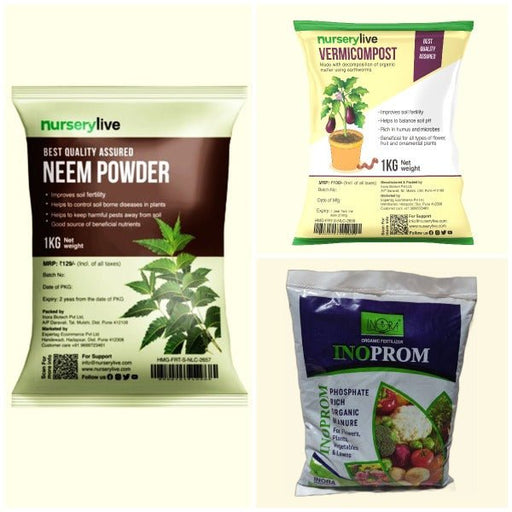 Save 16%
Save 16%
Combo of Top Plant Fertilizers Elevate your gardening game with our exclusive Combo of Top Plant Fertilizers, featuring two bags of premiu...
View full details Save 24%
Save 24%
Pack of 4 Additives to Make Soil Healthy and Nutrient Rich Transform your garden into a thriving ecosystem with our Pack of 4 Additives de...
View full details Save 30%
Save 30%
Transform your gardening experience with our premium Combo of Perlite and Vermiculite. This unique blend is designed to enhance soil aeration and ...
View full details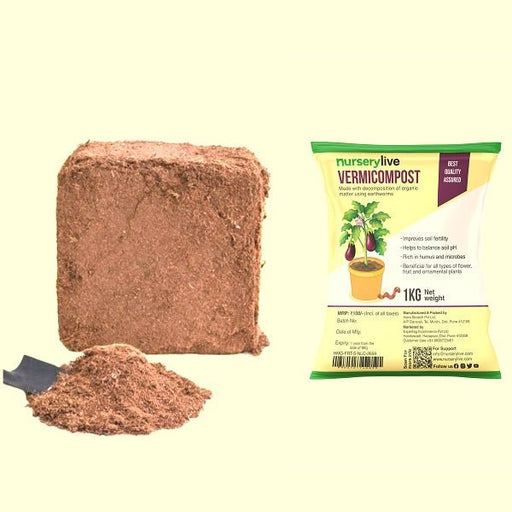 Save 27%
Save 27%
Combo of 2 Vermicompost and Cocopeat - Enrich Your Soil Naturally! Transform your garden into a thriving ecosystem with our Combo of 2 Ver...
View full details
 Save 35%
Save 35%
Best 6 Plants for Perfect Indoor Garden Transform your living space into a lush oasis with our curated collection of the Best 6 Plants for a...
View full details
 Save up to 50%
Save up to 50%
Mini Succulent Garden Pack Transform your space with our Mini Succulent Garden Pack, featuring a delightful collection of 4 any variety beautiful s...
View full details
 Save 30%
Save 30%
5 Best Fragrant Plants Transform your garden or indoor space into a fragrant paradise with our curated selection of the 5 Best Fragrant Plants. Th...
View full details
 Save 24%
Save 24%
Set of 2 Bonsai Looking Grafted Adeniums Transform your indoor or outdoor space with our exquisite Set of 2 Bonsai Looking Grafted Adenium...
View full details Save 45%
Save 45%
Top 4 Die Hard Succulents Pack Transform your indoor or outdoor space with our Top 4 Die Hard Succulents Pack, featuring a curated selecti...
View full details
 Save 30%
Save 30%
5 Best Indoor Plants Pack Transform your living space into a lush oasis with our '5 Best Indoor Plants Pack.' This carefully curated collection fe...
View full details
 Save 25%
Save 25%
Set of 4 Evergreen Air Purifier Plant Pack Transform your indoor space into a lush, green oasis with our Set of 4 Evergreen Air Purifier Pla...
View full details| SrNo | Item Name |
|---|---|
| 1 | Sassafras variifolium - Plant |
Sassafras variifolium, commonly known as the Sassafras tree, is a deciduous shrub native to the eastern United States. This unique plant is celebrated for its aromatic leaves and distinctive lobed foliage, which can vary in shape. The Sassafras tree is not only a beautiful addition to any garden but also plays a vital role in local ecosystems, providing habitat and food for various wildlife.
What makes Sassafras variifolium special is its historical significance and versatility. Traditionally, Native Americans used its roots for medicinal purposes, while its leaves are a key ingredient in the famous Creole dish, gumbo. The plant's vibrant fall colors and fragrant flowers add aesthetic value, making it a favorite among gardeners and nature enthusiasts alike.
One of the standout features of Sassafras variifolium is its unique leaf morphology, which can be unlobed, bilobed, or trilobed. This variability not only adds visual interest but also contributes to its adaptability in different environments. Additionally, the plant is known for its resistance to pests and diseases, making it a low-maintenance choice for gardeners.
Sassafras variifolium plays a crucial role in its native habitat by providing food and shelter for various species. Its deep root system helps prevent soil erosion, while its leaves contribute to the nutrient cycle as they decompose. By planting Sassafras, you are not only enhancing your garden but also supporting local wildlife and promoting ecological balance.
Ah, the Sassafras variifolium, also known as the sassafras tree, is like the quirky cousin of the plant world. With its unique, variably-shaped leaves, it’s the botanical equivalent of a fashionista who can’t decide on a single style. This tree is not just a pretty face; it’s a multi-tasker, offering aromatic leaves and roots that have been used in everything from traditional medicine to root beer. Talk about versatility!
The sassafras tree is like that friend who always brings the best snacks to the party. Its leaves and roots are packed with essential oils that have been used for centuries in herbal remedies. From soothing stomach aches to adding a dash of flavor to your culinary creations, this tree is a natural remedy powerhouse. Who knew a tree could be so helpful?
Caring for your Sassafras variifolium is like nurturing a diva; it requires attention but rewards you with stunning foliage. This tree thrives in well-drained soil and partial shade, so don’t let it bake in the sun like a forgotten cookie. Regular watering and occasional pruning will keep it looking fabulous and healthy.
The sassafras tree loves to hang out in the wild, often found in deciduous forests and along the edges of fields. It’s like the social butterfly of the plant kingdom, preferring a mix of sun and shade. This tree is native to the eastern United States, where it enjoys a good chat with its fellow flora.
Propagating Sassafras variifolium is like playing matchmaker in the plant world. You can start new trees from seeds or cuttings, but be prepared for a little patience. Seeds need a cold stratification period, while cuttings require a bit of TLC. Once you get the hang of it, you’ll have a mini sassafras forest in no time!
The uses of Sassafras variifolium are as diverse as its leaf shapes. Historically, its roots have been used to brew root beer, giving it a sweet spot in culinary history. Additionally, its leaves can be dried and ground into a spice called filé, a staple in Cajun cooking. Who knew a tree could be so delicious?
If you’re looking for a fast-growing tree, Sassafras variifolium is your go-to. This tree can grow up to 2 feet per year under the right conditions, making it the overachiever of the plant world. Just make sure it has enough space to spread its branches and show off its stunning foliage.
Like any diva, Sassafras variifolium can attract a few unwanted guests. Common pests include aphids and scale insects, which can be a nuisance. But fear not! A little neem oil or insecticidal soap can help keep these pests at bay, ensuring your sassafras remains the belle of the botanical ball.
The sassafras tree is a bit of a soil snob, preferring well-drained, loamy soil that’s rich in organic matter. It’s not a fan of soggy feet, so make sure to plant it in a spot where water drains away quickly. Think of it as the Goldilocks of trees—looking for that just-right soil!
When autumn rolls around, Sassafras variifolium puts on a show that would make any leaf-peeper swoon. Its leaves transform into a vibrant palette of yellows, oranges, and reds, making it a stunning addition to any landscape. It’s like the tree is throwing a farewell party for summer, and everyone’s invited!
The sassafras tree has a long history in herbal medicine, often touted for its potential health benefits. Traditionally, its roots have been used to treat ailments like colds and fevers. However, it’s important to note that sassafras contains safrole, which has raised some eyebrows in the health community. Always consult a professional before diving into herbal remedies!
If you’re looking to add a touch of whimsy to your garden, Sassafras variifolium is the perfect candidate. Its unique leaf shapes and stunning fall colors make it a standout choice for landscaping. Whether used as a specimen tree or in a mixed border, it’s sure to turn heads and spark conversations among your gardening friends.
Sassafras variifolium, also known as the sassafras tree, is a deciduous delight native to North America. With its unique, variably shaped leaves, it’s like nature’s own art project. This aromatic plant is famous for its fragrant roots, often used in teas and traditional dishes. Who knew a tree could be so versatile and tasty
Growing Sassafras variifolium is as easy as pie—if pie were a tree! Plant it in well-drained soil with plenty of sunlight, and watch it thrive. It loves a bit of space, so give it room to stretch its limbs. Just remember, patience is key; good things take time, even in the plant world!
Talk about a win-win for your garden!
Sassafras variifolium is like the cool kid in school—deer tend to avoid it! While no plant is entirely deer-proof, its aromatic leaves and unique taste make it less appealing to these four-legged munchers. So, plant away and let your sassafras stand tall while the deer look for a less flavorful snack!
Absolutely! Sassafras variifolium is a culinary superstar. Its leaves can be dried and ground into a flavorful seasoning, while the roots are often used to brew a delightful tea. Just remember, moderation is key; too much sassafras can lead to some unwanted side effects. So, sip and savor, but don’t overdo it!
Sassafras variifolium thrives in temperate climates, where it can bask in the sun and enjoy a good rain shower. It prefers USDA hardiness zones 4 to 9, making it a versatile choice for many gardeners. Just keep it away from extreme cold or scorching heat, and it’ll reward you with its vibrant foliage!
Sassafras variifolium can reach heights of 30 to 60 feet, making it a majestic addition to your landscape. It’s like the gentle giant of the plant world, providing shade and beauty without being too overbearing. Just be sure to give it enough space to stretch its branches and show off its stunning leaves!
Fear not, plant lovers! Sassafras variifolium is not considered invasive. It plays nicely with other plants and won’t take over your garden like some unruly relatives. Just give it the right conditions, and it’ll coexist peacefully, adding charm and character without the drama of an invasive species.
Propagating Sassafras variifolium is like playing plant matchmaker! You can start with seeds or take cuttings in spring. Just ensure the cuttings are from healthy branches, and keep them moist until they root. With a little love and care, you’ll have new sassafras plants ready to charm your garden in no time!
Sassafras variifolium is generally pest-resistant, but it’s not completely off the hook. Watch out for aphids and scale insects, who might try to crash the party. A good spray of water or insecticidal soap can send them packing. Keep an eye on your sassafras, and it’ll stay healthy and happy!
Yes, Sassafras variifolium can grow in pots, but it prefers to stretch its roots in the ground. If you’re potting it, choose a large container to accommodate its growth. Just remember to provide adequate drainage and sunlight. With a little extra care, your potted sassafras can thrive and bring a touch of nature indoors!